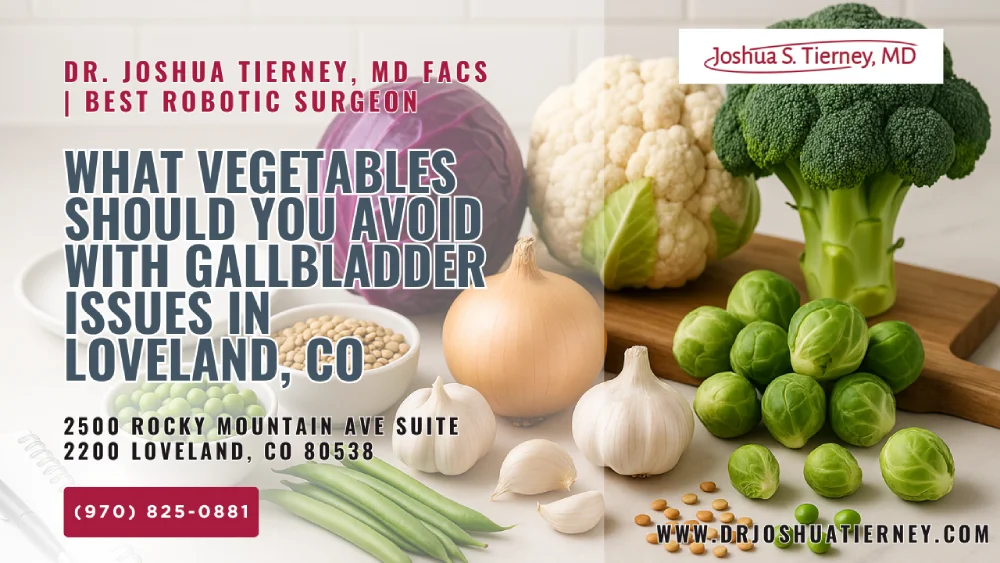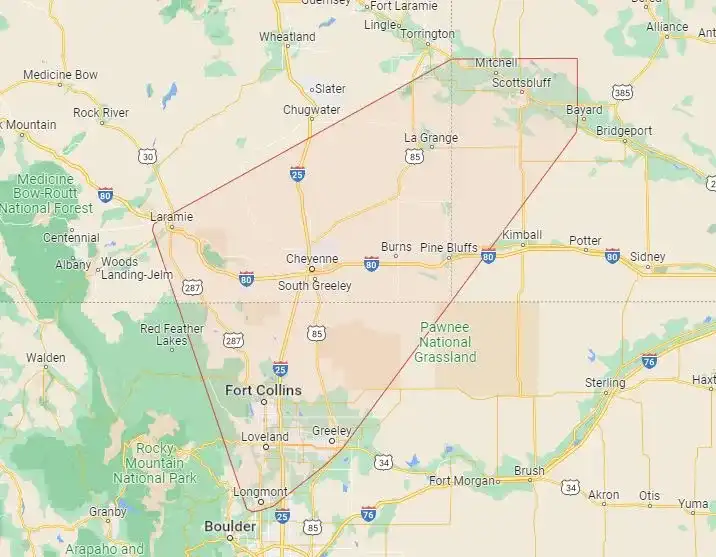If you’re coping with gallbladder pain, nausea, or have already battled gallstones, choosing the right vegetables makes a huge difference. In Loveland, CO, individuals with gallbladder issues should generally avoid vegetables that are high in fiber, particularly cruciferous vegetables like broccoli, cauliflower, and cabbage, as well as legumes such as beans, lentils, and peas. Spicy foods and those that cause gas and bloating, like onions and garlic, should also be limited or avoided based on individual tolerance. By understanding why these foods trigger discomfort, you can navigate local produce aisles confidently and still enjoy flavorful, nourishing meals that support gallbladder health, liver function, and overall digestive well-being.
Key Takeaways
- Gallbladder discomfort often flares when you eat gas-producing vegetables; cruciferous veggies and legumes lead the list because their insoluble fiber and complex sugars generate excess pressure inside an already inflamed biliary system.
- Individual tolerance is crucial; your neighbor might handle half a cup of steamed broccoli fine, while your gallbladder protests. Keep a food log and note portion size, cooking style, and timing relative to symptoms.
- Cooking methods can lower risk; peeling, de-seeding, pressure-cooking, or puréeing high-fiber vegetables breaks down tough cell walls, easing digestion without completely sacrificing nutrition.
- Substitute low-fiber, low-gas vegetables such as zucchini, peeled carrots, and tender lettuces to maintain vitamins and antioxidants while giving your gallbladder a breather.
- Regional produce matters; Northern Colorado farmers’ markets brim with roasted chiles and fresh onions—delicious but potentially irritating. Knowing local harvest seasons lets you plan safer swaps when trigger foods dominate market stalls.
Why Certain Vegetables Trigger Gallbladder Discomfort
Even the healthiest vegetables can feel like enemies when your gallbladder is irritated. Understanding how dietary fiber, natural sugars, and digestive gases interact with bile flow is the first step toward pain-free eating and improved gallbladder benefits.
Gallbladder Function in Plain English
Your gallbladder stores bile, releasing it in spurts to emulsify dietary fat. When stones block ducts or inflammation narrows passageways, any food that ramps up gas or bulk can create pressure behind that blockage—cue the severe, right-upper-quadrant ache Loveland ER teams know all too well. Healthy bile flow depends on synchronized signals from the liver, pancreatic enzymes, and the digestive system. Disruption anywhere—be it the common bile duct or pancreatic secretions—impairs digestion and nutrient absorption.
The Fiber and Fat Paradox
Insoluble fiber keeps bowels regular but pulls water into the colon, expanding volume. Meanwhile, even healthy fats in buttery sautéed veggies demand extra bile. Combine both, and a compromised gallbladder may cramp, overstretch, or trigger nausea minutes after you finish eating. Studies have demonstrated that high-fat diets can slow bile clearance and promote cholesterol-based stones, further complicating digestion.
High-Fiber Culprits: Cruciferous Vegetables
Cruciferous vegetables are nutrition powerhouses, but they’re also notorious for sulfur compounds that ferment in the gut, causing bloating and gas.
| Vegetable | Fiber (g per cup, cooked) | Typical Gas/Bloat Rating | Loveland Peak Season |
| Broccoli | 5.1 | High | June–September |
| Cauliflower | 3.0 | High | August–November |
| Cabbage | 4.0 | High | July–October |
| Brussels Sprouts | 4.1 | Very High | September–December |
Broccoli, Cauliflower, and Cabbage Breakdown
Even a half-cup of steamed broccoli can spawn gas bubbles that stress inflamed ducts. Cauliflower “rice” may sound lighter, yet its raffinose sugar still ferments. Raw cabbage, especially in slaws or kimchi, compounds the issue by delivering fiber with bracing acidity. If you crave these flavors, blanch them first, then pair small portions with foods rich in healthy fats such as olive oil or avocado, which stimulate bile flow gently without overloading the digestive process.
Legumes and Your Gallbladder: When Plant Protein Backfires
Legumes are budget-friendly protein stars, but their combination of soluble and insoluble fiber plus galactans often spells trouble for sensitive gallbladders.
Beans, Lentils, Peas: Fiber, Gas, and Pain
Black beans pack 15 grams of fiber per cup—triple the load of broccoli. That fiber ferments into methane, ballooning your intestines and pressing on an already tender biliary tract. Even split-pea soup can sabotage a calm evening if your gallbladder struggles to empty fully after meals. Pressure-cooking with a strip of kombu seaweed can break down some galactans, yet moderation remains key for anyone battling existing stones or recovering from an ERCP (endoscopic retrograde cholangiopancreatography).
Alliums and Bloating: Onions and Garlic
Loveland’s harvest festivals showcase sweet onions and fragrant garlic braids—but both contain fructans that ferment quickly.
Cooking Methods to Reduce Irritation
- Sweat onions slowly in a dry skillet, allowing their sugars to break down instead of searing them in oil.
- Infuse dishes with whole garlic cloves and remove them before serving; you gain flavor minus most fructans.
- Consider garlic-infused oil, which carries the aroma without fiber that can ferment.
- Pair onion-based dishes with warm lemon water to help stimulate gentle bile production and initiate mild detoxification without drastic cleanses.
Spicy Produce and Gallbladder Sensitivity
Roasted Hatch chiles migrate up I-25 to Loveland each fall. While vitamin-rich, capsaicin can provoke gallbladder spasms. Jalapeños, serranos, and dried red pepper flakes also stimulate extra bile release, aggravating an already strained duct system. If you adore heat, start with mild Anaheim peppers, remove the seeds, and combine them with low-fiber sides such as peeled zucchini ribbons for balanced digestion.
Seasonal Considerations in Loveland, CO
Northern Colorado’s high-altitude climate gifts us distinct waves of produce. During late summer, local stands overflow with crucifers and peppers—prime gallbladder antagonists.
Timing Your Farmers’ Market Trips
Aim for early spring greens like butter lettuce, spinach, and young zucchini, which are gentler. By November, pivot to roasted root veggies—peeled sweet potatoes and parsnips—all less fiber-dense than fall’s brassica bounty. Shoppers at Natural Grocers in Loveland can scout for dandelion root tea, artichoke extract, and other herbal medicines that scientific studies suggest may improve liver health and enhance bile production when used under guidance from a healthcare provider.
Alternative Veggies That Are Gallbladder-Friendly
You don’t have to banish vegetables entirely. Focus on low-fiber, water-rich options that still deliver vitamins.
Safe, Flavorful Swaps
- Zucchini and yellow squash: Peel to remove tougher skin; sauté lightly in broth instead of oil.
- Peeled carrots: Steam until tender, then mash with a hint of ginger for anti-inflammatory kick.
- Bell peppers (roasted and peeled): Removing skins slashes insoluble fiber while keeping color and antioxidants.
- Tender lettuces: Butterhead or romaine add crunch to wraps without the gassy aftermath common with kale.
- Cooked artichoke hearts: Supply phytochemicals that studies have demonstrated can stimulate bile flow and support liver function without overwhelming the gallbladder.
Cooking Techniques to Reduce Digestive Stress
Preparation often decides whether a vegetable comforts or cramps you.
Gentle Methods for Easier Digestion
- Pressure-cooking beans with a strip of kombu seaweed breaks down galactans, though portions should still be modest.
- Blanching crucifers for 30 seconds leaches some sulfur compounds; discard water before finishing the dish.
- Puréeing soups gives you micronutrients in a gut-friendly texture, reducing chewing workload and fiber density per mouthful.
- Avoid deep-frying; added fat forces your gallbladder to squeeze harder, raising odds of stone pain.
- Hydration matters—sip warm lemon water 20 minutes before meals. Lemon juice provides a mild acid that can enhance bile flow and kick-start digestive enzymes without harsh detox teas.
Natural Remedies and Lifestyle Tweaks for Gallbladder Health
Beyond food choices, several evidence-based strategies can improve liver function, assist detoxification pathways, and help prevent stone formation in the first place.
Dandelion Root & Herbal Allies
Traditional herbal medicines such as dandelion root, milk thistle, and turmeric contain phytochemicals known for their protective effects on the liver and gallbladder. While human health data vary, scientific evidence suggests these herbs may reduce cholesterol saturation in bile, thereby reducing the risk of cholesterol-based stones.
Move Your Body, Move Your Bile
Moderate exercise—think 30 minutes of brisk walking along Loveland’s Recreation Trail—stimulates digestive motility, improves the structure and function of the common bile duct, and influences the composition of the gut microbiota toward more beneficial bacteria.
Mindful Fat Intake
Emphasize healthy fats like olive oil, walnuts, and avocado in controlled portions. These foods contain nutrients that stimulate bile flow without promoting stone formation, unlike a typical high-fat diet heavy in processed oils.
Hydration and Microbiota Composition
Adequate water intake keeps bile less viscous. Staying well-hydrated also supports the digestive system, aids detox, and helps maintain favorable microbiota composition—key factors that influence stone passage and overall health and well-being.
Creating a Balanced Plate Without Pain
Meeting daily veggie quotas while protecting your gallbladder can feel like a puzzle. Think portion, pairings, and pacing.
Practical Plate Assembly
- Fill half your plate with low-fiber vegetables (think sautéed zucchini ribbons).
- Reserve one-quarter for lean protein like baked cod, which needs minimal bile for digestion.
- Leave the final quarter for easy-digest carbs—white rice or mashed potatoes whipped with oat milk.
- Chew thoroughly and eat slowly; rushed meals can prompt sudden bile release spasms.
- Finish with a small cup of warm lemon water or mild detox tea featuring ginger to soothe the digestive tract and encourage gentle cleanse without aggressive laxatives.
When to Seek Professional Help
Symptoms include sharp right-upper-quadrant pain, jaundice, fever, or persistent vomiting—signals that stones or acute pancreatitis may be developing. If these arise, contact a healthcare provider immediately. Minimally invasive procedures like laparoscopic cholecystectomy or ERCP can remove stones or restore bile flow. Early intervention reduces complications and helps preserve pancreatic and liver health.
Conclusion
Gallbladder issues don’t mean surrendering your veggie habit—you just need smarter choices and careful prep. Skip or tightly limit cruciferous vegetables, legumes, spicy chiles, onions, and garlic unless you’ve tested your personal tolerance. Lean on peeled carrots, zucchini, tender lettuces, and gentle cooking methods to keep nutrients high and pain low. Logging symptoms, shopping seasonally, integrating natural remedies, and adjusting portions empower you to savor Northern Colorado’s produce without the ER detour. Ready to craft your next gallbladder-friendly meal? Start by picking two safe veggies and experimenting with a soothing steam or purée tonight—your digestive system will thank you tomorrow.
FAQs
How can warm lemon water benefit gallbladder health?
Sipping warm lemon water 20 minutes before meals provides mild acidity that can stimulate bile production, prime digestive enzymes, and support gentle detoxification. Although not a cure-all, studies have demonstrated improved bile flow and reduced post-meal bloating in some patients, making this simple habit a low-risk addition to your gallbladder-care toolkit.
Is artichoke extract scientifically proven to help with gallstones?
Preliminary scientific studies show artichoke leaf extract may enhance bile secretion and lower cholesterol in bile, potentially reducing the risk of cholesterol-based stones. While evidence is promising, you should consult a healthcare provider before adding concentrated extracts, especially if you already have existing stones or are taking liver medications.
Can dietary fiber ever be beneficial for gallbladder patients?
Yes—soluble fiber from oats, psyllium, and peeled apples can bind excess cholesterol and aid detoxification without creating bulky residue that overstresses the biliary tract. The key is gradual introduction and careful monitoring of symptoms to balance digestive benefits with comfort.
What role does the gut microbiota play in gallstone formation?
Research indicates that the composition of the gut microbiota influences cholesterol metabolism and bile acid recycling. Beneficial bacteria can reduce stone formation risk, whereas dysbiosis may promote it. Probiotic-rich foods like kefir or physician-approved supplements may help re-balance flora for better gallbladder health.
Are “gallbladder cleanses” or rapid detox programs safe?
Aggressive cleanses using high-dose oils and citrus can trigger rapid stone passage, potentially lodging a stone in the common bile duct—a painful emergency. Most gastroenterologists advise against such protocols. Opt for gentle, evidence-based approaches like hydration, balanced diet, and herbal support under medical supervision.
How does hydration influence bile viscosity?
Dehydration thickens bile, making it harder for the gallbladder to expel. Adequate daily water intake—about 2–3 liters depending on activity—keeps bile fluid, supports the digestive process, and aids in moving small particles out before they coalesce into stones.
What minimally invasive options exist for stubborn gallstones?
If conservative measures fail, procedures like laparoscopic cholecystectomy or ERCP can remove stones or restore bile flow with minimal scarring and shorter recovery times. Discuss these options with a Northern Colorado surgeon experienced in minimally invasive gallbladder care.
Does a high-fat ketogenic diet worsen gallbladder symptoms?
For many patients, very high-fat intake overwhelms bile production, slowing digestion and encouraging stone growth. If you choose a ketogenic approach, prioritize healthy fats, add soluble fiber, and monitor symptoms closely. Collaboration with a dietitian familiar with gallbladder physiology is recommended.
Can dandelion root tea really support liver and gallbladder detoxification?
Traditional use and emerging research suggest dandelion root’s bitter compounds enhance bile flow and improve liver function. While not a standalone cure, including one cup of unsweetened dandelion tea daily can complement other lifestyle strategies aimed at reducing gallstone risk.
How soon after gallbladder surgery can I reintroduce vegetables?
Most patients start with clear liquids, then low-fiber veggies like peeled zucchini within a week, depending on surgical recovery. Gradual progression, small portions, and mindful chewing help the digestive system adapt. Always follow personalized guidelines from your surgeon or registered dietitian.








